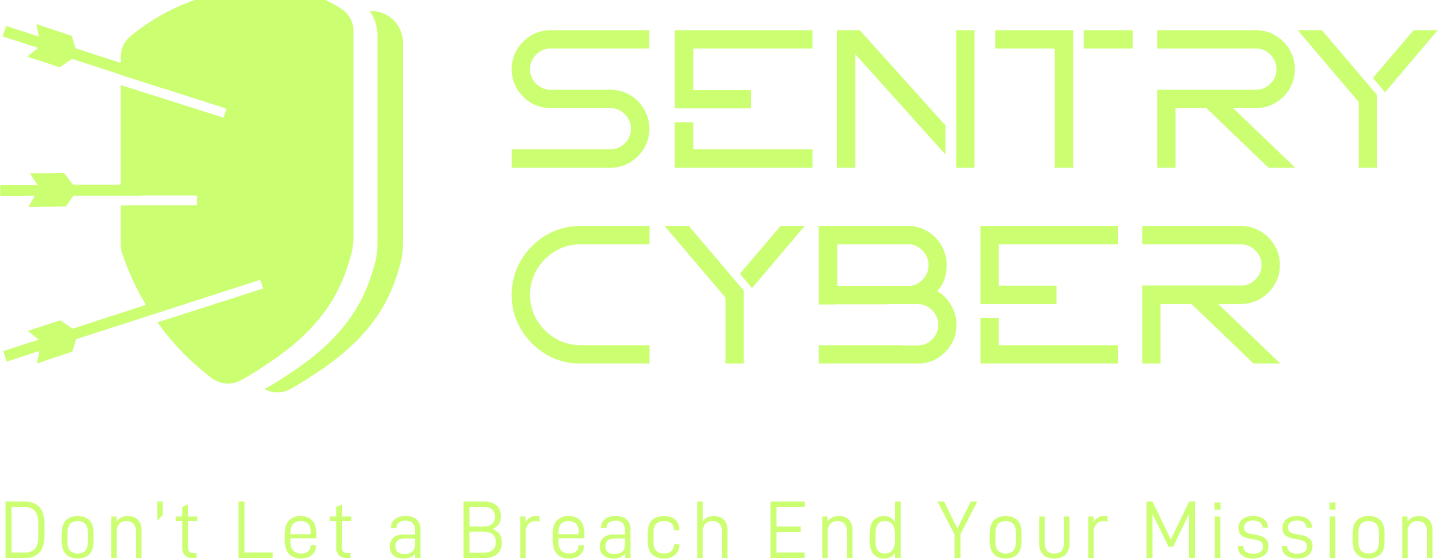
In today’s digital landscape, the threats facing small and medium-sized businesses (SMBs) are evolving rapidly. One of the most insidious emerging dangers is the Black Basta ransomware group. This notorious cybercriminal organization isn’t just relying on technical exploits; they are actively targeting your most valuable asset – your employees. Shockingly, Black Basta has been observed attempting to bribe staff members into clicking malicious links, turning trusted insiders into unwitting accomplices. This novel approach makes strong cybersecurity policies for SMB more crucial than ever. Understanding this unique threat is the first step toward building resilient defenses.
The Alarming Tactic: Black Basta’s Insider Recruitment
Black Basta isn’t your typical ransomware gang. While they employ sophisticated encryption methods and double extortion tactics, their foray into insider recruitment represents a significant escalation. Imagine the scenario: an employee receives an unsolicited offer, perhaps disguised as a legitimate opportunity, to simply click a link. This link, of course, contains the payload that unleashes Black Basta’s ransomware on your network.
This tactic preys on human vulnerability. It leverages financial incentives, making it incredibly difficult to detect through traditional security measures alone. For businesses, this means that even with the best firewalls and antivirus, a single compromised employee can open the floodgates. Therefore, a multi-layered defense strategy, with a strong emphasis on your people, is absolutely essential. We must consider every angle to combat these advanced persistent threats.
How Black Basta Operates: A Glimpse into Their Modus Operandi
Black Basta, first identified in early 2022, has quickly risen to prominence among ransomware operators. They primarily utilize a “ransomware-as-a-service” (RaaS) model, where the core developers lease their malicious tools to affiliates. These affiliates then execute the attacks, sharing a percentage of the ransom payments.
Their typical attack chain involves:
- Initial Access: This can vary widely, but often includes exploiting vulnerabilities, phishing emails, or, as we’ve discussed, insider collaboration. For more on how ransomware attacks work, especially for SMBs, read our detailed blog:
- Lateral Movement: Once inside, they move stealthily through the network, escalating privileges to gain control over critical systems.
- Data Exfiltration: Before encryption, Black Basta often steals sensitive data. This allows them to execute a “double extortion” scheme, threatening to release the data publicly if the ransom isn’t paid.
- Encryption: Finally, they deploy their ransomware, encrypting files and rendering systems inaccessible.
- Ransom Note: A note is left, demanding cryptocurrency payment for the decryption key and data deletion.
This methodical approach highlights the need for comprehensive protection. Businesses must focus not only on preventing initial access but also on detecting and responding to lateral movement and data exfiltration attempts.
Bolstering Your Defenses: Essential Cybersecurity Policies for SMB
Combating a sophisticated adversary like Black Basta requires a robust and proactive approach to cybersecurity. Implementing effective cybersecurity policies for SMB is foundational. These policies act as a blueprint, guiding your team and technology to create a strong security posture. Let’s explore some critical areas:
1. Comprehensive Employee Training: Your First Line of Defense
No technological solution can fully replace human vigilance. Regular and engaging cybersecurity awareness training is paramount. This training should cover:
- Phishing Recognition: How to identify suspicious emails, links, and attachments. Crucially, conduct phishing simulations regularly to test and improve employee vigilance. This hands-on experience helps staff recognise real threats. While Google Workspace and Microsoft 365 offer basic email filtering, they may not provide adequate protection against sophisticated phishing and business email compromise (BEC) attacks. We highly recommend a powerful secure email gateway that connects into the inbox using APIs, like IronScales.com. This solution filters out a reported 99.7% of all malicious emails, significantly reducing the chances of malicious links or attachments reaching your employees. For more on training, visit: Cyber Security Training.
- Social Engineering Tactics: Understanding how attackers manipulate people to gain access.
- Reporting Procedures: Clearly defined steps for employees to report any suspicious activity or unusual requests, no matter how small.
- The Insider Threat: Explicitly educating employees about the dangers of unsolicited offers and the severe consequences of collaborating with malicious actors. Emphasize that such actions can lead to job loss and even legal repercussions.
Consider incorporating real-world examples of Black Basta’s tactics into your training. This practical approach will make the information more relatable and impactful for your staff.
2. Nurturing Staff and Culture: Mitigating Insider Risk
Beyond formal training, focusing on employee well-being and fostering a positive work culture is increasingly vital. A disgruntled employee or one facing personal financial hardship might be more susceptible to the lure of a paid incentive from a ransomware group.
It’s important for businesses to:
- Foster Open Communication: Create an environment where employees feel comfortable discussing issues, including financial challenges, without judgment.
- Promote Job Satisfaction: Ensure fair treatment, recognition, and opportunities for growth. Happy employees are generally less likely to be tempted by illicit offers.
- Ethical Practices: Uphold strong ethical standards within the company, reinforcing that integrity is valued above all else.
By actively supporting your staff, you build a stronger, more resilient human firewall against external manipulation.
3. Robust Access Control and Least Privilege
Limiting access is a powerful defense. Implement the principle of least privilege, meaning employees only have access to the data and systems absolutely necessary for their job functions. This significantly reduces the potential damage an attacker can inflict if they compromise an account.
Key measures include:
- Multi-Factor Authentication (MFA): Mandate MFA for all accounts, especially for remote access, VPNs, and critical systems. This adds an essential layer of security, making it much harder for attackers to gain access even if they have a password.
- Strong Password Policies: Enforce complex, unique passwords and regular password changes.
- Role-Based Access Control (RBAC): Assign permissions based on an employee’s role within the organization.
4. Network Segmentation and Monitoring with Google Workspace Features
Segmenting your network isolates different parts of your infrastructure. If one segment is compromised, the attacker’s ability to move laterally to other critical systems is significantly hindered.
For businesses leveraging Google Workspace, specific features can greatly enhance security:
- Data Loss Prevention (DLP) Rules: Implement DLP rules for both Google Drive and Gmail. These rules can automatically identify and prevent sensitive information (like credit card numbers, personal identifiable information, or confidential documents) from being shared externally, either accidentally or maliciously. This is a powerful tool against data exfiltration attempts by Black Basta.
- Context-Aware Access: Utilize Google Workspace’s Context-Aware Access policies to ensure that users can only access Google Workspace data from authorized devices and trusted locations. For instance, you can set policies to only allow access from company-managed devices, specific IP ranges, or when a device meets certain security posture requirements (e.g., encrypted, up-to-date operating system). This adds another layer of control over who can access your critical data.
Furthermore, continuous network monitoring tools can help detect unusual activity, such as:
- Unauthorized access attempts
- Unusual data transfers
- Spikes in network traffic
- Attempts to access sensitive files
Early detection is crucial for mitigating the impact of a ransomware attack.
5. Regular Data Backups and Recovery Plans
Even with the best preventative measures, a breach is always a possibility. Robust backup and recovery strategies are your last line of defense against ransomware.
- 3-2-1 Backup Rule: Maintain at least three copies of your data, on two different media types, with one copy offsite.
- Offline Backups: Ensure some backups are completely disconnected from your network. This prevents ransomware from encrypting your backups along with your primary data.
- Regular Testing: Periodically test your backup restoration process to ensure data integrity and a quick recovery in the event of an attack.
6. Patch Management and Vulnerability Assessments
Cybercriminals, including Black Basta, actively exploit known software vulnerabilities. A rigorous patch management program is vital to keep all your systems and applications updated with the latest security patches.
- Automated Patching: Where possible, automate the patching process to ensure timely updates.
- Regular Vulnerability Scans: Conduct periodic scans to identify and address security weaknesses in your network and applications.
Elevating Your Security with Cybersecurity Frameworks: Introducing SMB1001
To truly formalize and strengthen your cybersecurity policies for SMB, working towards a recognised cybersecurity framework is highly beneficial. Unlike complex enterprise-level frameworks, the SMB1001 certification is specifically designed to address the unique challenges faced by SMBs, including budget constraints and limited technical expertise.
Achieving SMB1001 compliance provides numerous advantages:
- Structured Security Posture: It offers a clear, tiered approach to implementing essential cybersecurity controls.
- Increased Security Maturity: By following the framework, your business systematically improves its ability to prevent, detect, and respond to cyber threats.
- Enhanced Trust and Reputation: Certification demonstrates to clients, partners, and insurers that you take cybersecurity seriously, enhancing your credibility and potentially opening new business opportunities.
- Regulatory Compliance: It helps ensure compliance with relevant data protection regulations, such as the Privacy Act in Australia.
By adhering to a framework like SMB1001, your cybersecurity policies for SMB become more robust, comprehensive, and auditable, significantly increasing your overall security posture.
Frequently Asked Questions (FAQ)
Q: What is Black Basta ransomware?
A: Black Basta is a prominent ransomware group that emerged in 2022. They are known for encrypting victim data and exfiltrating it for double extortion. Notably, they have employed tactics like attempting to pay employees to click malicious links, making cybersecurity policies for SMB critical for defense.
Q: How does Black Basta typically gain initial access?
A: Black Basta uses various methods, including exploiting vulnerabilities, sophisticated phishing campaigns, and, uniquely, attempting to bribe and recruit insiders within organizations to click malicious links.
Q: Can strong cybersecurity policies for SMB really stop Black Basta?
A: Yes, robust cybersecurity policies for SMB are essential. They provide a framework for defense, covering employee training, access controls, data backups, and incident response, all of which are vital to counter Black Basta’s multi-faceted attack strategies.
Q: What should an employee do if offered money to click a suspicious link?
A: Employees should immediately report any such offers to their IT or security department. They should absolutely not click the link or engage with the sender. This highlights the need for clear internal reporting procedures.
Q: How often should we update our cybersecurity policies?
A: Cybersecurity policies for SMB should be reviewed and updated at least annually, or whenever there are significant changes in technology, threats, or business operations. Regular review ensures they remain relevant and effective.
Q: Why is employee morale important for cybersecurity?
A: A positive work environment and strong employee morale reduce the likelihood of employees becoming disgruntled or desperate. Disgruntled employees, or those facing personal financial struggles, are more vulnerable to being bribed by cybercriminals like Black Basta, turning them into insider threats.
Conclusion
The rise of Black Basta, with its audacious tactic of trying to pay employees to compromise corporate networks, serves as a stark reminder: cybersecurity is not just about technology; it’s profoundly about people. For SMBs, the threat is real, but so are the defenses.
By implementing strong cybersecurity policies for SMB, investing in comprehensive employee training (including phishing simulations), nurturing a positive work culture, and leveraging advanced security tools like IronScales and Google Workspace’s DLP and Context-Aware Access, you can significantly reduce your risk. Furthermore, working towards certifications like SMB1001 provides a structured path to enhanced security. Don’t wait for an attack to happen. Proactively review and strengthen your defenses today. Your business’s future depends on it.
Ready to enhance your cybersecurity posture? At Sentry Cyber, we understand the unique challenges SMBs face. We invite you to engage with us for a complimentary cyber security workshop. In this workshop, we can identify your current ransomware exposure and other cybersecurity risks, providing tailored insights and recommendations. Take the first step towards a more secure future for your business. Learn more and book your workshop here: Complementary Cyber Security Workshop.
